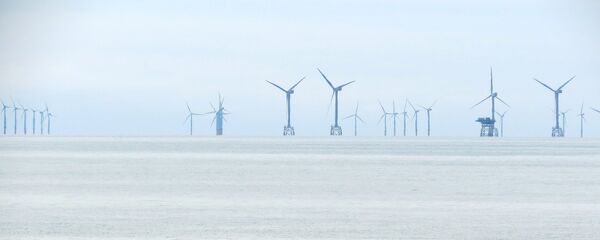Strewn underwater across the North Sea, the Viking Link cable between the UK and Denmark will dwarf existing cables by a wide margin and is expected to provide the Nordic country with a high level of supply security, while also enhancing its ability to export and import power.
The new 11 billion krone ($1.7 billion) power link will stretch from the vicinity of Vejen in south Jutland over to Bicker Fen, near the town of Boston in Lincolnshire, some 170 kilometers north of London. The capacity of the cable will be 1,400 MW, equivalent to about a third of Denmark's average electricity consumption.
Grønt lys til at bygge verdens længste elkabel mellem Danmark og Storbritannien #dkenergi #dkgreen https://t.co/JXHF5HMkY2 pic.twitter.com/ZpWKCoCT1U
— Energiministeriet (@MinForsyning) October 30, 2017
Construction on the link will begin in 2019, and the project is to be completed by 2022. In connection with the Viking Link, the high-voltage grid between Holstebro and the German border will also be expanded.
Vi bygger verdens længste elkabel “Viking Link” mellem Danmark og Storbritannien 🔋🇩🇰🇬🇧 Grøn strøm kan blive den nye bacon med stor eksportværdi til gavn for forsyningssikkerhed, grøn omstilling og samfundsøkonomi #dkpol #dkgreen pic.twitter.com/rpEanVbePm
— Lars Chr. Lilleholt (@larsclilleholt) October 30, 2017
"Strong power connections abroad are essential to small nations like Denmark. We will have the opportunity to sell our surplus green energy on a larger market," Lars Christian Lilleholt said, as quoted by the Danish news outlet Copenhagen Post, lauding the country's prowess in using renewable energy sources. "Meanwhile, we will get a larger supply of energy to Denmark when the wind is not blowing and the sun is not shining. Strong energy links to our neighbors contribute to more affordable and reliable power for our consumers and to keep the value of wind power up," he said, adding that electricity may become "the new bacon" for the Nordic country's economy, known for its agricultural exports.
"Denmark is a small country, but when it comes to wind energy, we are a superpower," a proud Lilleholt told the Danish TV channel TV2. "We were the first nation in the world to erect wind turbines in the sea over 25 years ago in 1991, and since then Danish energy firms have led the way in offshore wind energy," he added.
In 2015, 42 percent of Denmark's entire electricity demand was covered by energy obtained through wind turbines, and the country has an overall capacity of 1.3 GW. In February 2011 the Danish government announced its Energy Strategy 2050 plan with the aim to be fully independent of fossil fuels by 2050, reiterating its goal once again in 2015, despite public skepticism.



